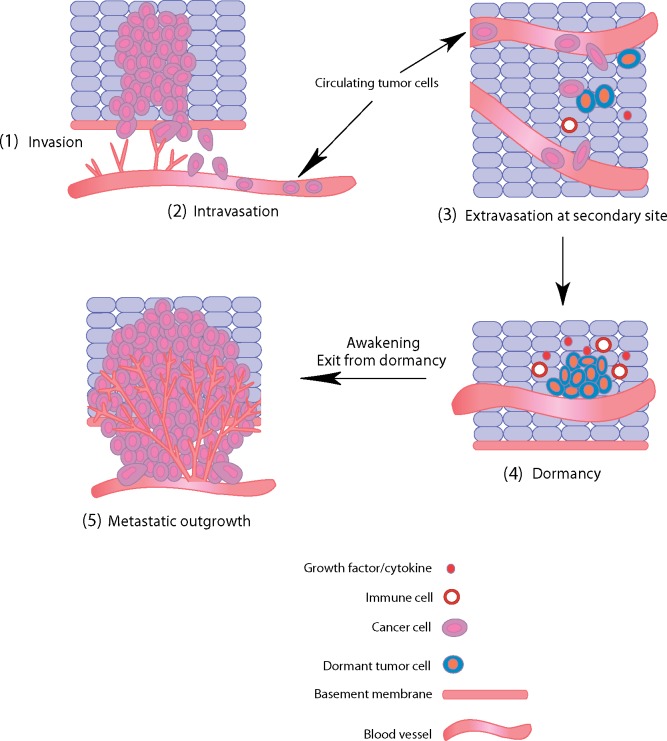Figure 1.
Metastatic spread of human breast cancer. Metastatic spread and tumor outgrowth at a distant site require the completion of a number of critical steps, each involving complex interactions between cancer cells and the local microenvironment. Cells at the primary site invade tissue architecture and spread through the basement membrane (1: invasion), after which they enter blood vessels (2: intravasation). These cells then enter the circulation, where they must survive in the blood vessels before adhering to a vessel wall at a distant site. Cancer cells in the bloodstream can now be detected by various methods and enumerated to provide prognostic information. After adhering to a vessel wall, cancer cells then extravasate and enter normal tissue at a secondary site (3: extravasation). Interactions between cancer cells and the local microenvironment, which may include various growth factors, cytokines, and immune cells, may lead to the induction of dormancy for long periods of time (4: dormancy). Later, changes in these same factors, or the presence of new molecules, can induce an exit from dormancy, leading to full metastatic outgrowth and disease recurrence (5: metastatic outgrowth).

